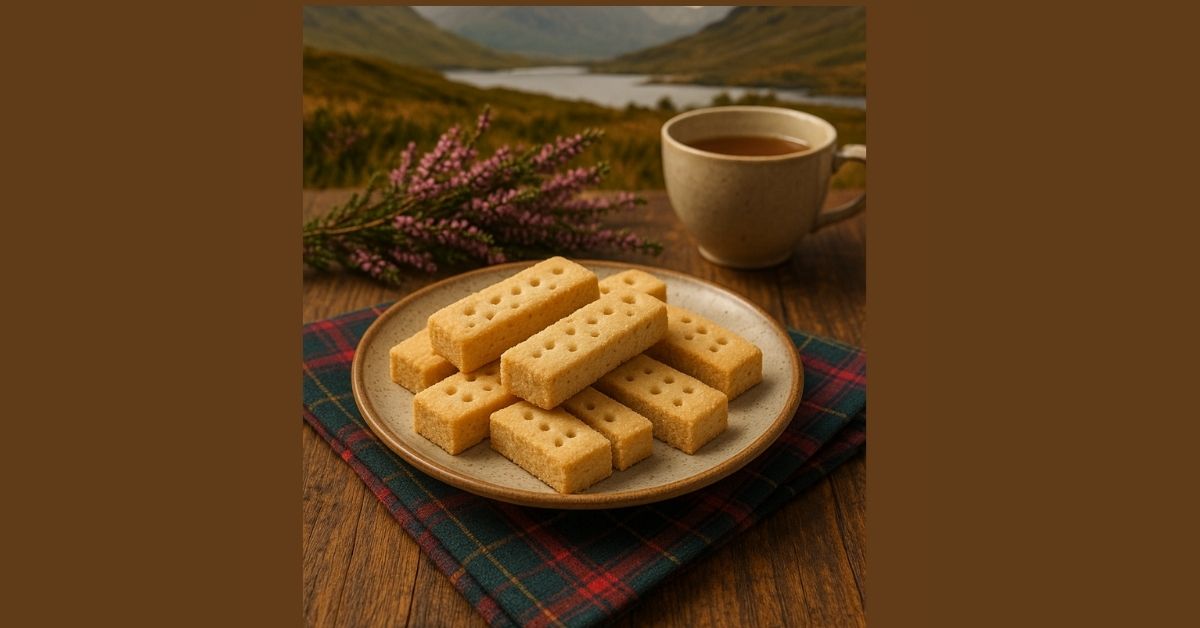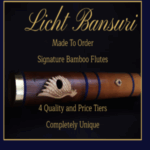Melt-in-the-Mouth Scottish Shortbread is the very essence of Scotland in biscuit form: simple ingredients, centuries of history, and endless buttery bliss. From medieval bannocks to modern artisan tins, this iconic treat tells a story of heritage, craftsmanship, and pure flavour.
Origins & History
Shortbread’s roots stretch back to the 12th century, when Scottish bakers enriched rustic bannock breads with leftover biscuit dough. By the 16th century, the technique had evolved: Mary, Queen of Scots’s own cook is credited with refining recipes at Linlithgow Palace, using pure butter and sugar to fashion the first crumbly rounds.
As Scottish merchants and nobility embarked on the Grand Tour, they carried shortbread recipes beyond the Highlands. Across Europe and later to North America, dense, buttery biscuits became synonymous with Scottish hospitality often served at grand homes and diplomatic receptions. Over time, what began in a small royal kitchen turned into an export commodity, establishing shortbread as Scotland’s edible ambassador.
Anatomy of the Perfect Shortbread
The Classic Ratio
True shortbread follows the simple “3:2:1” formula by weight:
- 3 parts plain flour
- 2 parts unsalted butter
- 1 part granulated sugar
This golden ratio yields exactly the right balance of structure, richness, and tenderness.
- Plain Wheat Flour: Yields a traditional, crumbly texture.
- Rice-Flour Blends: Introduce extra lightness, creating a more delicate, “melt-away” crumb.
Many bakers employ a small proportion of rice flour (10–20%) to enhance crispness without compromising mouthfeel.
Here’s where Scotland shines: grass-fed dairy herds produce high-fat butter bursting with natural sweetness. The higher butterfat content (often 82–84%) lends shortbread its characteristic richness and helps bits of the biscuit literally dissolve on the tongue.
- Caster Sugar: Fine crystals that integrate seamlessly, yielding a crisp bite.
- Icing Sugar: Ultra-fine powder that mellows the crumb, for a more tender, “short” finish.
Hedging between these sugar types allows bakers to dial in texture from lightly crunchy to sublimely silky.
Regional Variations
Aberdeen Butteries (“Rowies”)
On Scotland’s northeast coast, rowies (or Aberdeen butteries) predate modern shortbread. They’re flakier and slightly savoury, ideal for a hearty breakfast yet share the same devotion to buttery layers.
Shortbread Fingers vs. Rounds vs. Petticoat Tails
- Fingers: The classic, elongated bars cupped between thumb and forefinger.
- Rounds: Easy to cut from a rolled circle and often stamped with thistles or clan crests.
- Petticoat Tails: Triangular wedges, so named for their resemblance to the frilly undergarment worn by 18th-century ladies.
Each shape carries local tradition and presentation style: some Highland villages favor hand-pressed thistle motifs, while Lowland bakers might imprint family initials.
West Coast Sea-Salted Shortbread
A contemporary twist brings sea salt harvested from Scottish lochs and coastal springs into the dough. The delicate salt crystals heighten sweetness and add a subtle briny nod to the Atlantic—proof that shortbread can evolve without losing its soul.
Artisan Makers On Location
Walkers Shortbread: A Family Legacy
Founded in 1898 in Aberlour, Walkers transformed shortbread from kitchen staple to global brand. Their original mill kitchen still stands in the heart of Speyside, where the old-fashioned stone ovens turn out over 37 million cases a year, yet small-batch techniques endure.
Across the Hebrides and Cairngorm foothills, boutique bakers experiment with botanical infusions and whisky-butter blends. One Uist-based family weaves local heather tips into the dough for a delicate floral note, while another on Skye ages butter in oak casks previously used for single malt.
Even today, many Scots cherish homemade shortbread. These homey batches are shared at ceilidhs and community halls to keep tradition alive.
As part of our Made in Scotland series, you might also enjoy our deep dive into Scotland’s iconic soft drink on
IRN-BRU: The Soft Drink That Outsold Coke.
Modern Innovations
Flavor Infusions
- Lavender & Heather-Honey: Sweet and aromatic, a nod to moorland blooms.
- Chocolate-Dipped: Edges or bottoms coated in dark or white chocolate.
- Whisky & Lemon Zest: Sharp citrus meets smoky Speyside malt.
These inventive varieties show that shortbread can be both classic and cutting-edge.
Shortbread tins have transcended their utilitarian origins, becoming cherished keepsakes. Eco-friendly metal containers and bespoke wedding favor boxes lend artisan brand cachet, while embossed logos and hand-stitched ribbons add an artisanal flourish.
Tasting & Pairings
- Scottish Breakfast Tea: Strong, malty leaves cut through buttery richness.
- Light Darjeeling: A fragrant, floral counterpoint to the biscuit’s density.
- Speyside Single Malt: The gentle smoke and honeyed notes complement shortbread sweetness.
- Sweet Sherry: A touch of acidity lifts the heavy butter.
- For the adventurous palate, pair shortbread with tangy blue cheeses the crumb balances pungent flavors, turning a simple biscuit into a gourmet surprise.
A simple biscuit, yet timeless—that’s the magic of Scotland’s shortbread. From its medieval bannock origins to today’s designer flavor fusions, shortbread embodies the pride, creativity, and unchanging love of good butter that defines Scottish cuisine. Whether you savor a crumbly finger with your afternoon tea, press your own “petticoat tails” at home, or gift a bespoke tin of salted-caramel rounds, you’re tasting centuries of sweet tradition. So next time you bite into that golden, crumbly bliss, remember: you’re experiencing a story handed down, one buttery mouthful at a time.






